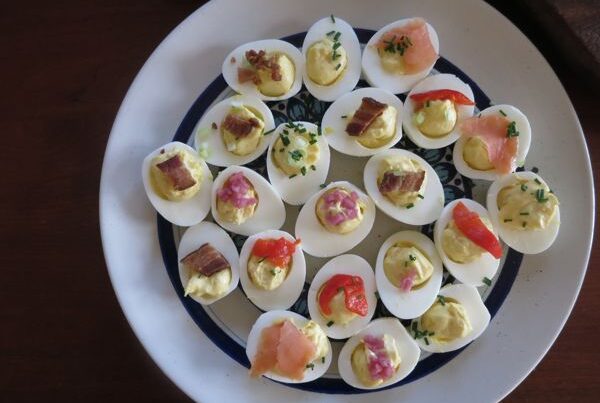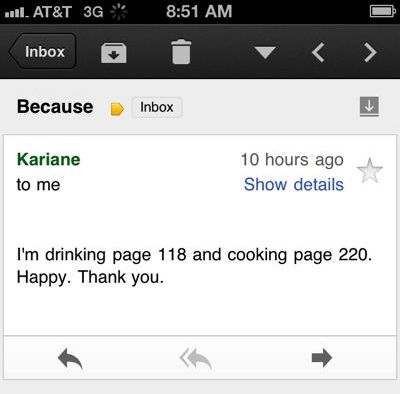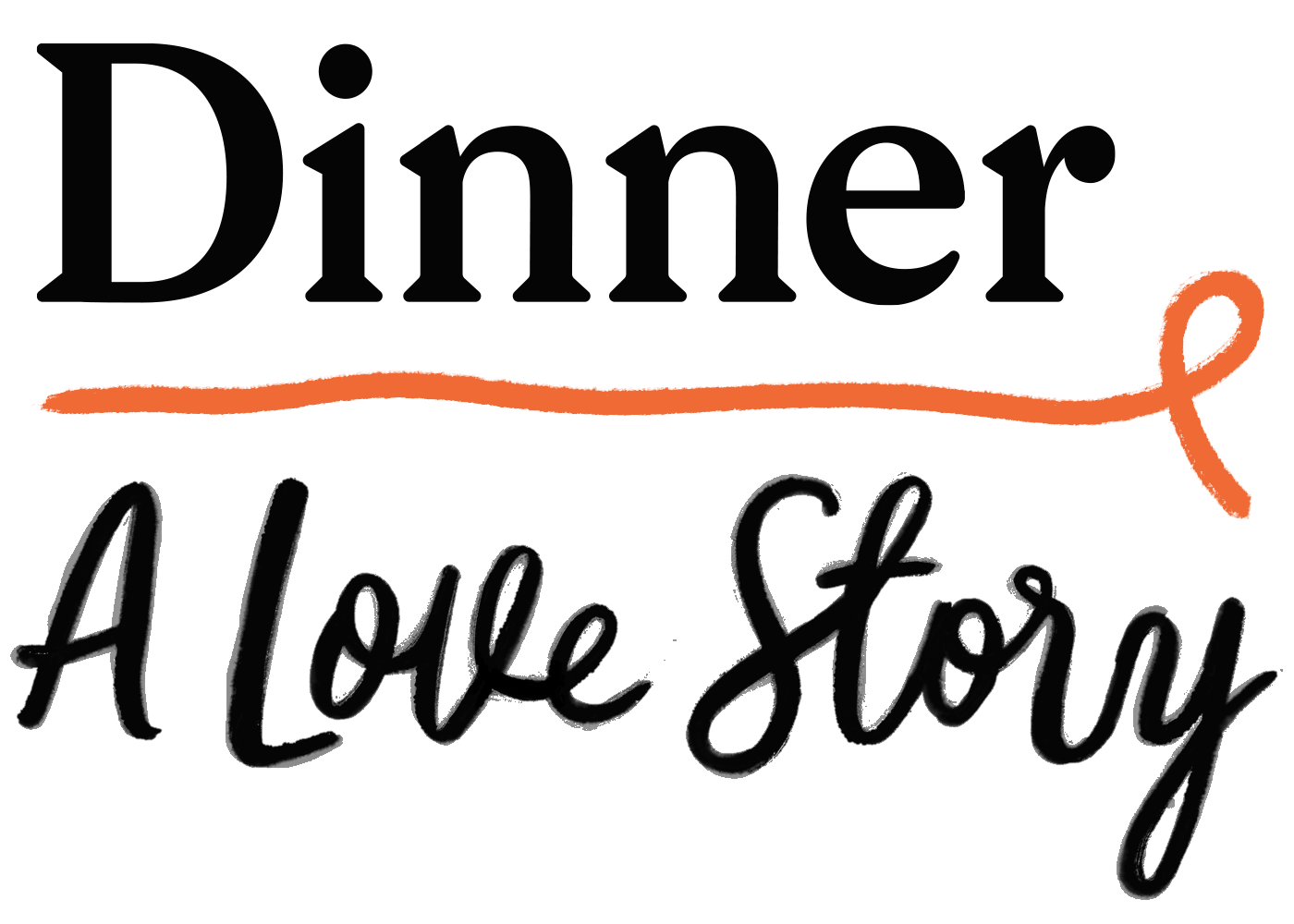Which recipe style do you like better?
RECIPE STYLE 1: Conventional The style most magazines and cookbooks go with where all ingredients written in a list before the instructions. Like this delicious looking tagliatelle I will be making soon.
OR
RECIPE STYLE 2: Casual Ingredients are integrated with instruction using casual estimates for measurements (“a handful of walnuts” or “a few glugs of olive oil” or “a big heaping spoonful of Dijon”). Like this recipe for easy shrimp tacos (and like 95% of recipes that appear on DALS.)
I’m torn. The dinner diarist in me gets comfort from seeing a clear list and exact plan and everything in order. But sometimes, I feel like it can have the opposite effect. A long list of ingredients can scare me off. And I worry that being so exact about measurements makes readers less likely to improvise, i.e. less likely to learn and experiment and, ultimately, feel confident. That’s why I usually write in Recipe Style 2. But I could see that this might alienate people would rather be told exactly what to do and how to do it.
Anyway, I would love to hear your thoughts — beginning cooks are especially welcome — even if it’s just a quick comment below voting for “Casual” or “Conventional.” Thanks!






I’m a traditionalist when it comes to recipes…I know this is terrible, but I just cannot get myself to carefully read the recipe all the way through before I begin, no matter how I try. Which usually means I end up rushing around to complete some step or other that I wasn’t anticipating, but if I get halfway through and realize there’s an ingredient I wasn’t expecting? That can mean the end of the attempt, which can be pretty crushing. So I really need to have a list of ingredients up top.
When there’s a great story attached to the recipe, I like Style 2. The story helps me to recall the recipe later on and making it feels like making my own story.
For a more complicated recipe, though, Style 1 makes it more likely that I’ll actually attempt it.
I think you strike a pretty good balance in the way you present the recipes on DALS.
I love casual recipes because I feel like I am sitting in the cooks kitchen learning how to make the recipe.
I agree with #8. A list of ingredients (and rough amounts) up front, and then casual from then on, would be my ideal combo!
There are recipes for which the standard format makes sense, but I have to comment about this because your “casual” style was completely revolutionary for me when I first started reading your blog. I’ve been cooking for a few years but I’m terrible about skipping steps in recipes or not doing whatever required prep work was mentioned in the ingredients list. I just find the casual format to be super easy when I’m making dinner. It’s also the style that works best for me when I jot down my own versions of recipes. So I vote for casual!
Conventional! I like to see what I’m gonna need right up front. But I still want the back (or front story!). You guys rock. You are my pretend friends and no matter how “braggy” you are, you’re welcome in Brooklyn any time.
While I like reading the casual style, when it actually comes to making a recipe I prefer the more conventional style recipe, at least if it involves more than 3 -4 ingredients. It’s just easier to have things prepped when there is a cut and dry ingredients list. I’m all for recipes using terms such as a handful or to taste though. So, really a combination of both!
Conventional. I believe that people can always improvise after reading a detailed recipe 🙂
To be honest. I fell in love with DALS when I saw a recipe called for “a few generous glugs of olive oil”. I think it’s brilliant.
Conventional – it makes it easier to gather the ingredient before you start the recipe or make the grocery list of the items you need. I do, however, like the informal quanities (pinch, handful) when cooking.
As long as you define the term ‘glug’ or ‘handful’ or ‘smidgen’ somewhere near the end for the control freaks, I think the casual style works best for the modern reader. The long list of ingredients works really well for mise en place, but if you can’t extract the list from the recipe, I’m not sure you have any business cooking in the first place.
Definitely conventional. As a less experienced cook, I prefer to have “guaranteed results” before I attempt changing a recipe.
Casual! So much more fun to read. I normally skip the ingredient list anyway and wait and see how they appear in the preparation. I hate it when it says things like “mix all the dry ingredients”.
I vote for a combo approach too. More open-ended recipes with few ingredients and a couple lines of instructions–casual with ingredients in bold.
Longer ingredient lists–conventional.
I like the balance you have now….
PS: I read your newsletter, do I win the wine?
The science major within me loves the first style — the ingredients are laid out beforehand like a materials list in an experiment. That way you’re prepared ahead of time! 🙂
PS: I read your newsletter, do I win the wine?
For recipes with more than 5 ingredients, I do like a list so I can check against what I have/am likely to be willing to acquire. For very simple things, casual helps to get me out of my comfort zones and also helps to nudge me toward variations on common themes.
Ideal for me? A chatty conversation about a recipe with a more conventional (even if the ingredients are simply listed without measurements) list with notes (steps I can figure out. but dice vs. slice? add a note).
It occurs to me that I might not be making much sense.
I really, really dislike the casual style. It is fine if I’m just reading the recipe for fun and have no intentions of ever making it. But, for those of us who cook every day, work full time, and have a family, PLEASE do an ingredient list and amounts like in a conventional recipe. I need this so that I can a) make my grocery list and b) set out all of the ingredients before I begin cooking. It honestly saves time. I don’t find this format “unfriendly.” Rather, it is practical. And isn’t that one of the things we need when cooking?
conventional! i prefer to be able to scan the ingredients quickly and see the steps laid out (are there 4 things to do with this recipe or 7?) and then i can jump back and forth between cooking, cleaning, watching kids and the recipe more easily.
i have not made some of the recipes you post that look totally delicious b/c of the paragraph format.
thanks for asking.
I definitely prefer the first method you describe better. As someone who has only recently embraced cooking, I find I do better with exact instructions. That said, rest assured that I do tend to improvise as well, particularly if I don’t have an ingredient and don’t want to buy it.
I know this is ancient history by now, but it’s new to me! I prefer a mash up of the two. Or rather, a reverse of the first. When writing my own for my recipe box, I usually start with the description part and then end it with the list of ingredients since that’s almost always the way I read recipes anyway. I find it hard to absorb the ingredient list when I don’t know what I’ll be doing with it. : )
PS, casual measurements all the way. I don’t think I’ve ever measured olive oil in my life.
I know I’m late to this post/comment, but I am a hybrid-recipe gal: I like the LIST of ingredients laid out, but the directions CASUAL. I also like the “substitute THIS if you don’t have THAT”.